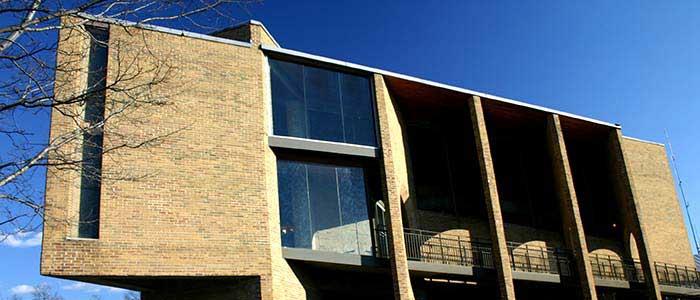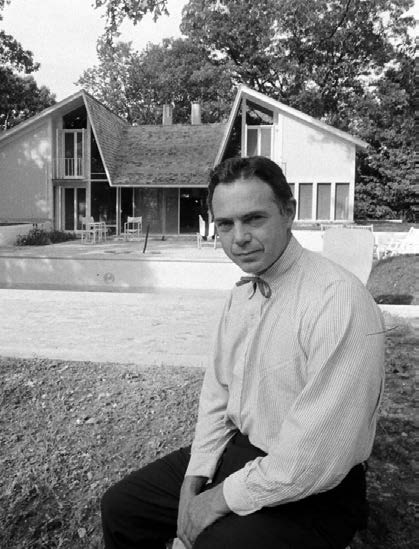Village Hall

In-person services are available from 9 a.m. to 5 p.m. weekdays.
A wide range of routine municipal services that do not require a visit to Village Hall are available online via links at our Online Services page, including construction permits, business licenses and parking permits.
Limited appointments are available for time-sensitive transactions such as property transfers.
Residents in need of assistance may also call 708.358.5700 from 7 a.m. to 4 p.m., weekdays except holidays.
- Address: 123 Madison St., Oak Park, Illinois 60302
- Email: village@oak-park.us
- Telephone: 708.383.6400 (TTY 711)
All municipal operations except the Fire and Public Works departments are housed in a half basement, main floor and partial upper-level mezzanine of the one and a half story, 70,000-square-foot Village Hall complex completed in 1975 and named to the National Register of Historic Places in 2014.
About the Building
The open interior plan of Village Hall is intended to reflect the transparency and accessibility of the municipal government. The lower level of the building contains the Police Department, including the lockup and a now defunct firing range. The elevated, triangular form of the Council Chamber is the dominant architectural feature. The two-story Council Chamber contains a semicircular conference table for Village Board members and raised built-in benches that can accommodate up to 200 citizens. The configuration of the benches places citizens no more than 19 feet from the Village Board president.
Village Hall is more than just a building, a fact underscored by its 2014 addition to the National Register of Historic Places nearly a decade ahead of schedule. Typically, buildings and properties are not eligible for inclusion on the venerable list until after at least 50 years. Village Hall's role in Oak Park’s efforts to achieve racial integration and community stabilization during the 1970s earned it special consideration.
The building has posed challenges to the many technological demands of modern government, but efforts have focused on working within the constraints of the design. Computer networks, television cameras for the Council Chamber and community room, and energy efficient lighting have been added. A geo-thermal heating and air conditioning system was installed in 2012 for the Council Chamber.
About the Architect
 Harry M. Weese (1915-1998) was an architect whose firm, Harry Weese & Associates, practiced modern and often eclectic architecture. Weese studied architecture at MIT and Yale and received a fellowship in urban planning at the Cranbrook Academy of Art in Detroit. In addition to architecture, Weese was a firm believer in historic preservation and the social aspects of urban planning. His work covers an astonishing range of scales and programs, from transit systems to townhomes and hotels to corporate headquarters and municipal centers. The New York Times architecture critic ranked Weese’s monumental Washington Metro system as “among the greatest public works projects of the 20th century.”
Harry M. Weese (1915-1998) was an architect whose firm, Harry Weese & Associates, practiced modern and often eclectic architecture. Weese studied architecture at MIT and Yale and received a fellowship in urban planning at the Cranbrook Academy of Art in Detroit. In addition to architecture, Weese was a firm believer in historic preservation and the social aspects of urban planning. His work covers an astonishing range of scales and programs, from transit systems to townhomes and hotels to corporate headquarters and municipal centers. The New York Times architecture critic ranked Weese’s monumental Washington Metro system as “among the greatest public works projects of the 20th century.”